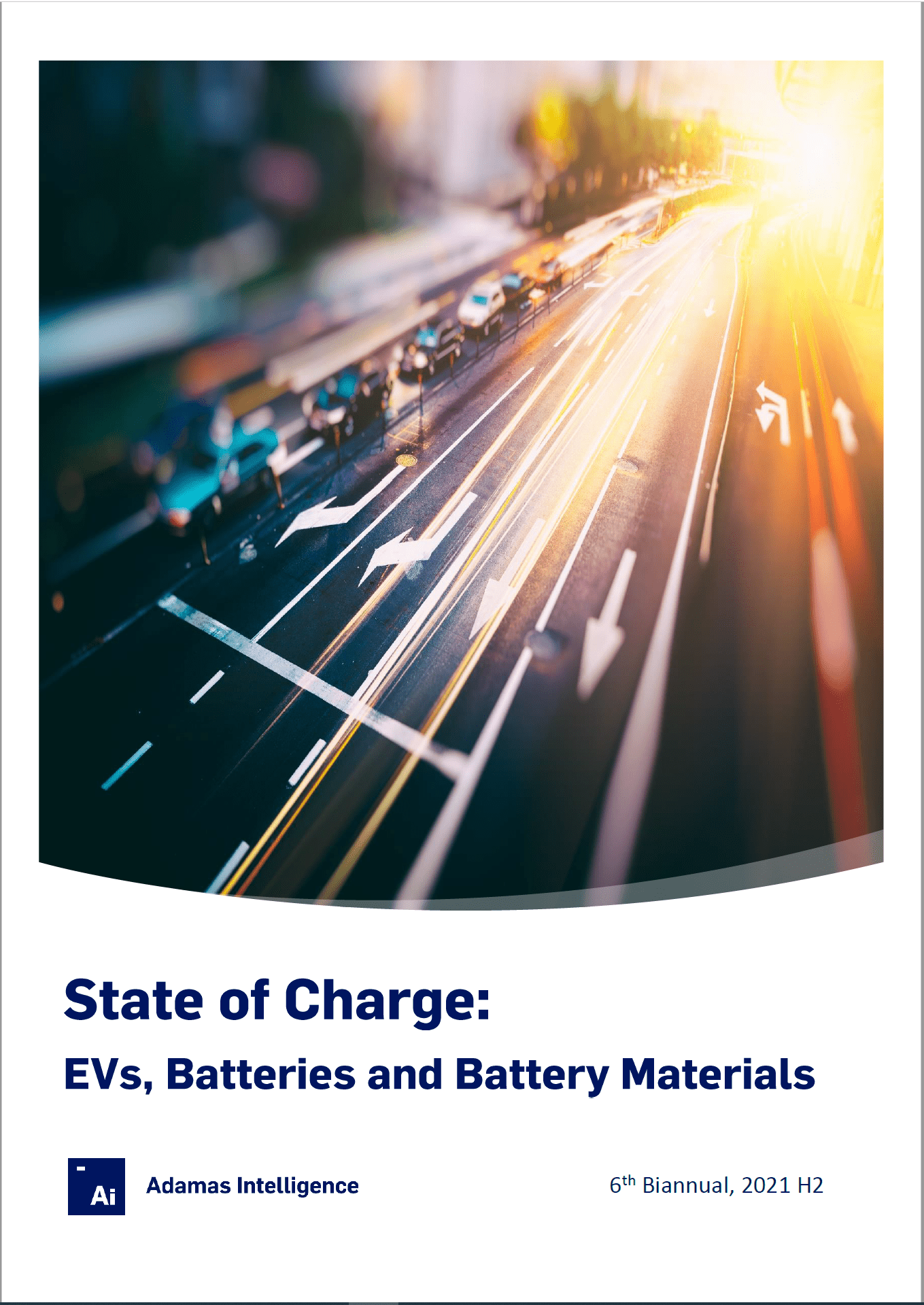NEW REPORT: State of Charge: EVs, Batteries and Battery Materials
A must read for anyone with a professional interest in the EV industry or looking to learn more about the forces driving the fast-moving battery and battery materials supply chains.
Adamas Intelligence is pleased to announce the publication of its 6th biannual ‘State of Charge: EVs, Batteries and Battery Materials’ report. The complimentary report is available to all clients and mailing list subscribers.
Download Report
In this biannual ‘State of Charge’ report, we provide an informative overview of the global EV market’s performance over the past half-year (in this case “2021 H2”) and its implications on the ever-evolving battery and battery materials supply chains.
This overview draws on research and data available to clients through our subscription-based monthly reports and web-based trackers.
Among the findings of the latest report:
- In 2021 H2 global passenger EV registrations jumped 62% over the same period the year prior, amounting to 5.84 million units versus 3.60 million units in 2020 H2. This increase was driven by surging sales growth in Asia Pacific (86% year-over-year), the Americas (51% year-over-year) and Europe (34% year-over-year).
- In the Asia Pacific region, the near doubling of EV sales year-over-year in 2021 H2 translated to a massive 141% increase in watt-hours of battery capacity deployed onto roads over the same period the year prior, and a corresponding 134% increase in lithium, 77% increase in nickel and 75% increase in cobalt consumption over the same period.
- In 2021 H2, total global battery capacity deployed onto roads in all newly sold passenger EVs combined amounted to a hefty 177.2 GWh, 92% more than was deployed globally in 2020 H2.
- In 2021 H2, Tesla continued to ‘lead the pack’ by battery capacity deployed onto roads globally, installing more watt-hours into newly sold EVs than its five closest competitors combined.
- Just seven cell suppliers globally (CATL, LG Energy Solution, Panasonic, BYD, Samsung SDI, SK On and CALB) were collectively responsible for more than 88% of all battery capacity and battery metals deployed onto roads globally in passenger EVs in 2021 H2.
- In 2021 H2, 107,200 tonnes of lithium carbonate equivalent (“LCE”) were deployed onto roads globally in the batteries of all newly sold passenger EVs combined, 88% more than were deployed globally in 2020 H2. 56% of all LCE units were deployed as carbonate, 44% as hydroxide.
- Moreover, in 2021 H2, 84,600 tonnes of nickel were deployed onto roads globally in the batteries of all newly sold passenger EVs combined, 59% more than were deployed globally in 2020 H2.
- Lastly, in 2021 H2, 18,200 tonnes of cobalt, 23,600 tonnes of manganese, and 159,200 tonnes of graphite were deployed onto roads globally in the batteries of all newly sold passenger EVs combined, up 48%, 62% and 101% over the same period the year prior, respectively.
This free report is essential reading for anyone with a professional interest in the EV industry or looking to learn more about the forces driving the fast-moving battery and battery materials supply chains.
Click on the image above to access the report.
Back to overview



